The worlds crafted by Taiyo Matsumoto are vast and beyond compare. From post-apocalyptic desert wastelands through gentrified slums-turned-amusement-parks, to world renowned art museums and quiet orphanages – these are but a handful of the homes to some of manga’s greatest characters and stories.
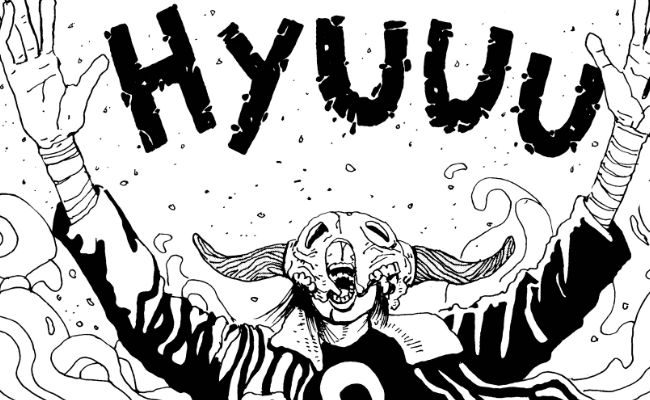
Born in Tokyo 56 years ago on October 25, Taiyo Matsumoto’s career has brought about a pantheon of beloved manga, films, and anime with not just a unique visual style, but a kind of storytelling rarely seen in the medium. Regardless of the subject matter — be it a former superhero on the run, kids fighting off yakuza businessmen, or the melancholy of the high school table tennis circuit — the subject of Matsumoto’s storytelling usually circles back to the undeniable importance of finding those to call your family, and all the heart-warming and heart-breaking emotions that go along with it.
Influenced by an array of artists the world over — Katsuhiro Otomo, Enki Bilal, and Mœbius, to name a few — Matsumoto boasts an easily recognizable style that stands out among other manga. Once an aspiring soccer great, Matsuomoto’s win at the Comics Open contest led to a tour of France in the mid-1980s that would change the course of his life forever.
Since that trip, Matsumoto has gone on to create not only some of manga’s most beloved classics, but some of the most inspired comics to ever have been inked. His manga has earned him a variety of awards, including the Japan Cartoonists Association Award, Osamu Tezuka Cultural Prize, Japan Media Arts Festival Award, and even an Eisner Award.
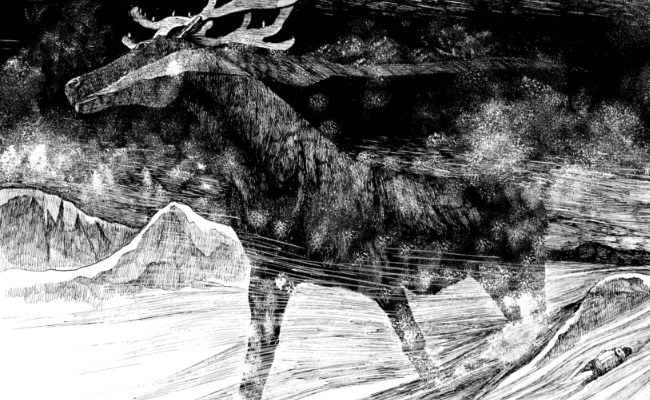
To say I wouldn’t be the person I am today — in matters personal and creative — without having experienced Matsumoto’s manga would be an understatement. At every chance I get, I recommend his work. I recall a pilgrimage to all the great comic stores and bookshops of London a few years ago. On our way back to the train, we stopped at a Foyles (a UK chain of bookstores). As I browsed for any excuse to spend money, I noticed a man pick up Viz’s all-in-one edition of Tekkonkinkreet.
I’m not one to talk to strangers. Frankly, I avoid it entirely. But I could see him wading between whether or not to buy it while he thumbed through the pages. I stepped in and told him to buy it. “Trust me. I don’t know what you usually read, but you’ll love that.” That seemed to be enough to tip the scales, as he thanked me, walked over to the counter post-haste, bought it, and disappeared into the drizzly London streets. I’ll never know if he enjoyed it, but I have to believe he did.
For those who have never read his manga, or have only read a couple, take a moment to imagine yourself in a bookstore. It’s a chilly day. Your belly is warmed by a cozy sweater and hot chocolate. You’re minding your own business. Suddenly, some bearded fellow (with whom you did not indicate an interest in speaking with) is piling book after book into your arms. Recommending, or rather, demanding you read each of the manga he lists below.
Tekkonkinkreet (Black and White)
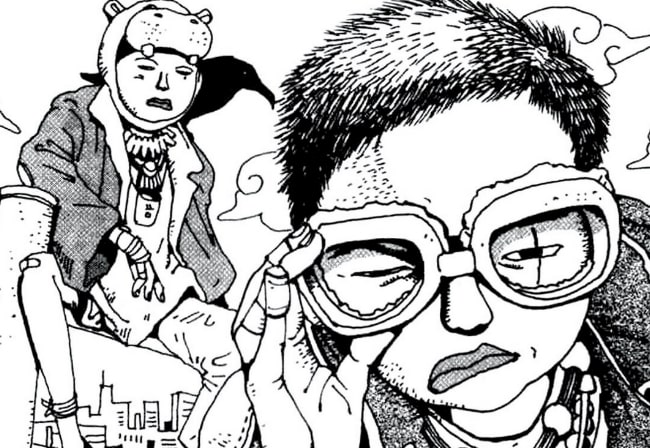
Set in the fictional crumbling metropolis of Treasure Town, Tekkonkinkreet follows orphaned street urchins Black and White as they fight off the local yakuza, foreign developers, superhuman hitmen, other stray kids, and minotaurs born from internal darkness — all in the pursuit of keeping their beloved home from changing around them.
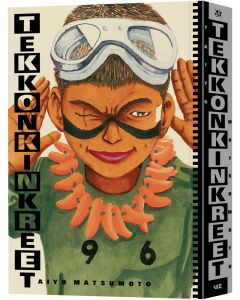
Whether you experience this one through Michael Arias and Studio 4°C’s anime adaptation, or through the manga itself, this is (in my opinion) one of the most important manga to ever have been created, and one that has held a place in my heart in a way words can’t adequately express. Luckily, if you’ve not read the manga, Viz is coming out with a brand new 30th Anniversary Edition of Tekkonkinkreet that’s hardcover and in its original format.* You can preorder this at your local comic store or bookshop!
Little fun fact: did you know Tekkonkinkreet is the reason Louise in Bob’s Burgers wears her signature rabbit hat? Now you do!
*Initial releases of Tekkonkinkreet were ‘flipped’, reading left-to-right instead of the traditional manga right-to-left
Ping Pong
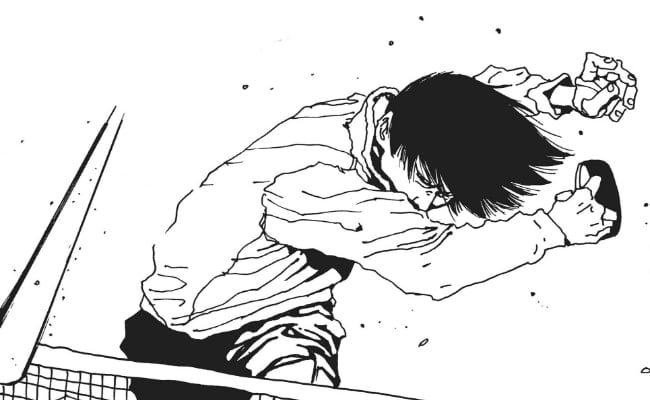
High school can be a tough time for many, fraught with all the melancholy of growing up, hormones, budding romances, and exams. For childhood friends Smile and Peco however, their biggest worry is how far they’ll go in their high school’s ping pong team and the various championships they enter.
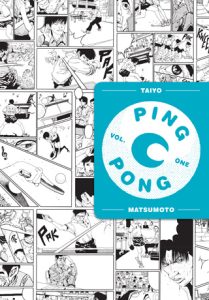
Ping Pong is one of Matsumoto’s easiest manga to dive into. At its heart, it’s your typical sports manga. There’s exhaustive training, self-doubt, all-star players, over-zealous coaches. But at it’s core, it drills down on the importance of friendship and being a part of a team. For a sport that’s not as fun to watch as it is to play, Matsumoto draws each ping pong match with such an energy that you can hear the ball thwack against the paddle and whizz by your head.
Viz recently released two omnibus editions that contain the entire series. There’s also a fantastic live-action movie (which Viz strangely licensed well before the manga) and an even-more-fantastic anime adaptation from Madhouse and Masaaki Yuaasa.
Blue Spring
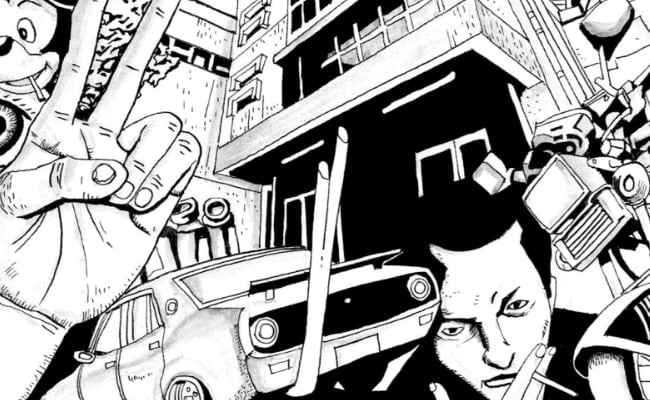
This short story collection follows the lives of high school delinquents as they desperately wait for school to end and summer to arrive. There’s crime, violence, deadly rooftop games, and all the bravado and machismo you could expect from teenage tough guys, with each tale diving into their own rebellions and frustrations with life.
Blue Spring is the earliest of Matsumoto’s manga available in English, originally released in Japan in 1993. While now horribly out of print (seriously, don’t ask how much I had to pay for mine…), it’s interesting to see the earlier side of his work. Nowadays, his manga seems rooted in telling more quieter, human-driven stories, whereas his earlier work was full of action, fantasy, and violence.
Blue Spring also contains something of a mini-prequel to Tekkonkinkreet with a short story showing how a then-student Kimura came to work for Suzuki and his yakuza family.
No. 5
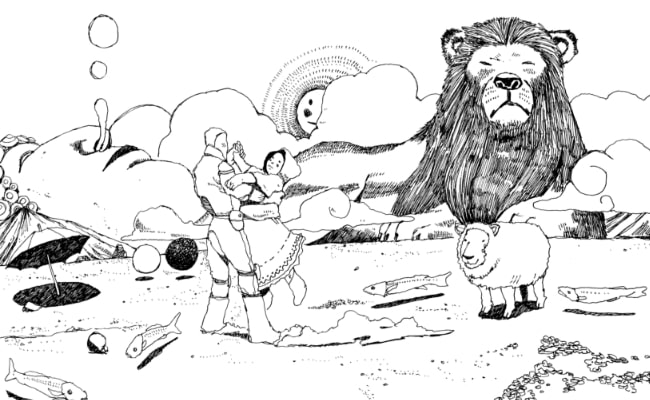
The world’s now a desert, and the only thing keeping it at peace are the superheroes in the Rainbow Council of the Peace Corps. Only they have a crisis on their hands: No. 5 — their top marksman — has dropped off the face of the earth. While maintaining the image of peace, the other guardians now have to track down No. 5 and his strange companion — a woman called Matryoshka — to find out just what caused him to go rogue.
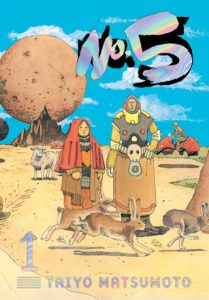
No. 5 is an acid trip of a manga, and that’s putting it lightly. If you’ve ever needed an example of where Matsumoto’s stylistic inspirations come from, it’s No. 5. It’s packed full of imagery inspired by BD (bande dessinée) greats like Moebius and Enki Bilal while still touting the unique charm of manga. Many pages capture what a hallucination having a fever dream might look like. Honestly, you might need a few read-throughs of this one just to take it all in.
Viz released No. 5 in four volumes, each with a cover topped with a foil logo. Fun fact: this actually isn’t the first time Viz released No. 5. They released it back in 2002 hoping to ride off the cult hit that was Tekkonkinkreet. Unfortunately, the two volumes they put out sold quite poorly, only selling less than 1000 copies between them. Thankfully we’re now in an age where manga (and Taiyo Matsumoto) is more appreciated, so this story can be enjoyed in full!
Sunny
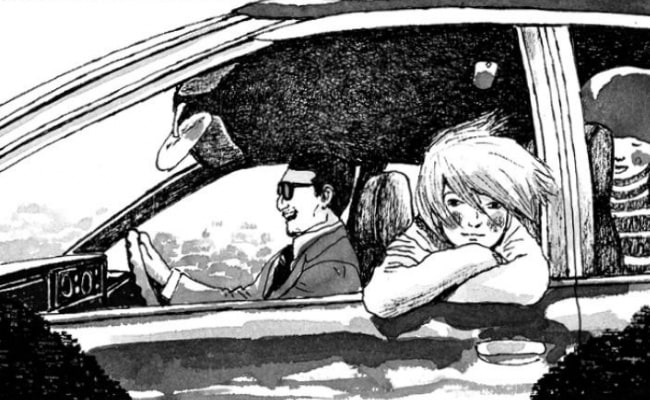
The Star Kids home is a group home and orphanage that houses a number of children of varying ages. Each child has their own complicated feelings about being there – some find it difficult to comprehend, others accept it for what it is. Fortunately, the play yard houses a busted-up Nissan Sunny which can take the children anywhere they can imagine.
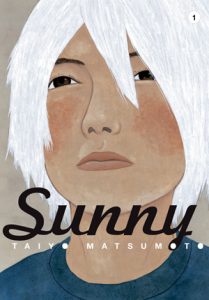
Sunny isn’t exactly autobiographical, but draws on many of Matsumoto’s childhood experiences of living in a foster home. The story itself is a testament to childhood strength and spirit. The children in this manga go through so much, at no fault of their own, but always find it in them to smile, laugh, and be happy with what they have. I’ll be the first to admit: there were quite a few points throughout this series that completely broke me. Just reduced me to a blubbering, snot-covered baby.
Viz released all 6 volumes of Sunny between 2013 and 2016. While the physical volumes are out of print, you can still pick this series up digitally. It’s a shame they’re out of print though. They’re gorgeous books with these really sleek canvas covers. Definitely pick them up second-hand if possible!
Cats of the Louvre
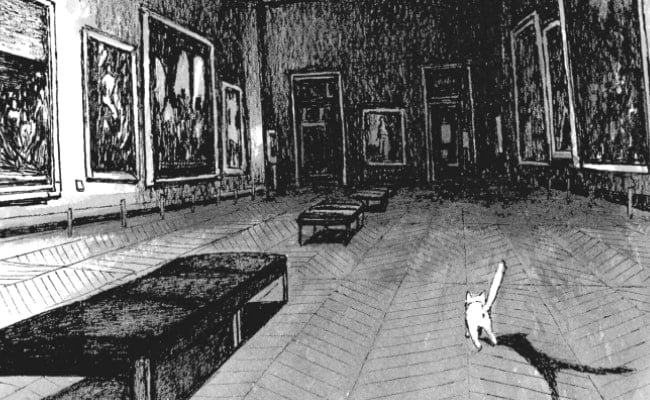
The Louvre — one of the world’s foremost art museums located in Paris — is home to some of art’s most revered pieces. The Mona Lisa. The Venus de Milo. The Raft of the Medusa. But when the lights go out, it becomes a dreamlike home to a small family of cats (who flicker between adorable creatures and a better-looking version of the cast of Cats) living secretly in the museum. Especially to one of its smallest members – an adorable white cat named Snowbebe, who can seemingly jump in and out of paintings.
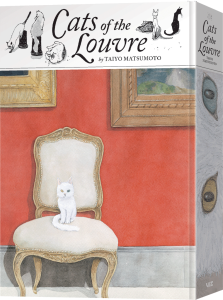
It’s easy to see why Cats of the Louvre won an Eisner Award. It’s a hauntingly poignant tale that truly nails the importance of art. Art does more than capture our imagination or pique our interest. It can serve as a way to cope with difficult emotions like loss or grief, as it does in this manga. It can inspire us in ways we could never imagine. It can be that escape we sometimes desperately need. The message is simple: whether you’re a human or a cat, art is a necessity in life.
Viz released this in a single omnibus in 2019 with a cleverly designed canvas cover. If you’re completely new to Taiyo Matsumoto’s manga, this is the perfect jumping off point. It has everything: mystery, urban fantasy, art, and cats. What more could you need? (Fair warning to animal lovers though: some of the cats do get injured and even die.)
GoGo Monster
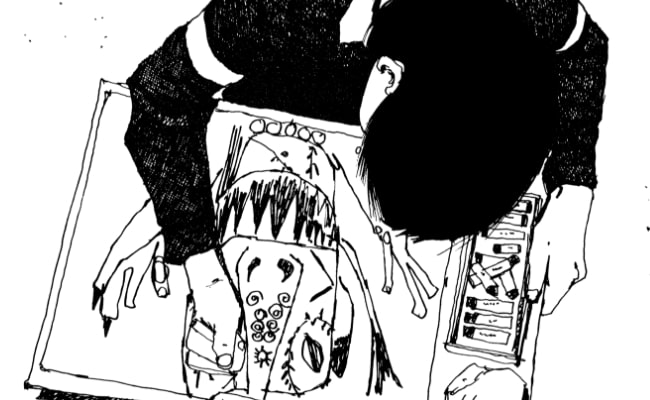
Third-grader Yuki claims to have a special ability: he’s the only one who can see the mysterious creatures on the other side of this world. While this leads to him becoming ridiculed by both his classmates and his teachers, he desperately dreams of a day he can live on the other side, even if his connection to it seems to be slowly dwindling with each passing day.
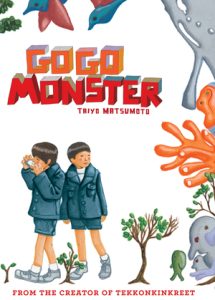
GoGo Monster is packed with some incredibly vivid imagery rivalling that of Yuki’s overactive imagination. It perfectly captures what being a lonely kid in grade school is like. Having to fill in the gaps with imaginary friends, and wishing to be whisked away to a world where you’d feel normal. If it’s something you experienced growing up, it can be a little painful to revisit, but it’s still a wonderful story that genuinely sticks with you.
This was initially released in English by Viz in 2003, and came with a nice little slipcase and a striking red fore-edge painting. This was another of his manga that was so horribly out of print, I had to pay out the nose to get it second-hand. Luckily, Viz is putting out a second edition reprint in 2024!
Unreleased works in English
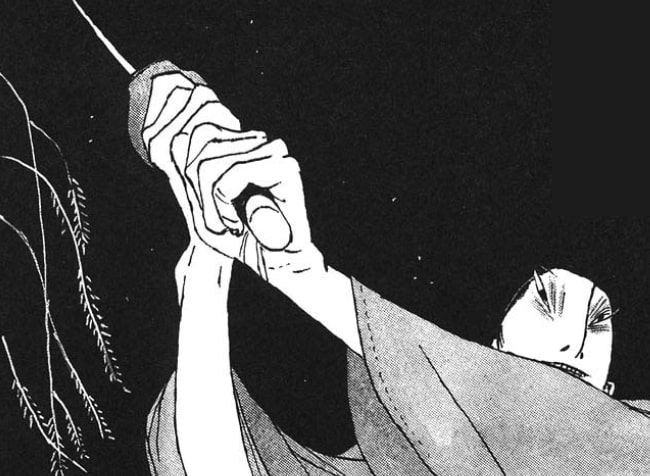
While the bulk of Taiyo Matsumoto’s library has made it across the ocean, there are many stories of his still only available in Japanese. Even before Blue Spring, he already had three short sports series published between 1989 and 1992. While there are so many short stories, short books, and one-shots of his out in the world, here are some of his unreleased works in English that truly deserve a read.
Straight was his first serialized manga, published in Morning and collected in 2 volumes, that followed two rookie pro-baseball players with opposite personalities. Two friends with opposite personalities is almost a staple of Matsumoto manga. It’s interesting to see how far back that goes.
Zero was a boxing manga that followed the listlessness and boredom of a boxer so great and successful that no one could defeat him. This led him to seek out a Mexican boxer rumoured to be so powerful, he’s killed in the ring before.
Hana Otoko follows Shigeo, a young boy who only wants to do well in school, and despises his estranged father for his carefree nature and obsession with baseball. After Shigeo is sent to spend the summer with his father, his father hopes to teach him that there’s more to life than studying.
Takemitsu Zamurai (seen in the image above) is personally one manga I’m shocked hasn’t been given an English release. The 8-volume series follows the story of a ronin (a wandering samurai with no master), and is one of many collaborations with writer Eifuku Issei. While I’ve only ever skimmed the pages of my own non-English copies, it’s has some stunning artwork. Even aside from the beautifully etched violence and action, the panelling and artistic direction reminds me of old famous ukiyo-e woodblock prints. Now if only we could get an English release of this one…(hint hint if anyone from Viz is reading this)
Upcoming Taiyo Matsumoto English releases
There’s a lot on the horizon for fans of Taiyo Matsumoto. Previously mentioned, there’s the 30th Anniversary edition of Tekkonkinkreet being released on November 28th, 2023. GoGo Monster is getting a reprinted second edition, currently available for pre-order and released in Summer 2024.
Most exciting though is his latest series – Tokyo These Days – is getting an English release from VIZ Media, starting in January 2024! It follows a manga editor named Kazuo who suddenly quits his job, only to discover early retirement isn’t the way to make up for his failures, and that the manga industry isn’t quite done with him.
With manga being a rich medium of stories and art styles, Taiyo Matsumoto has set himself apart with his avant-garde drawings and introspective narratives that deeply resonate with readers worldwide. Whether you’re already a fan of his, or this is the first time you’ve ever heard of him, it’s impossible to deny that Matsumoto’s works are more than just manga: they’re simply art.



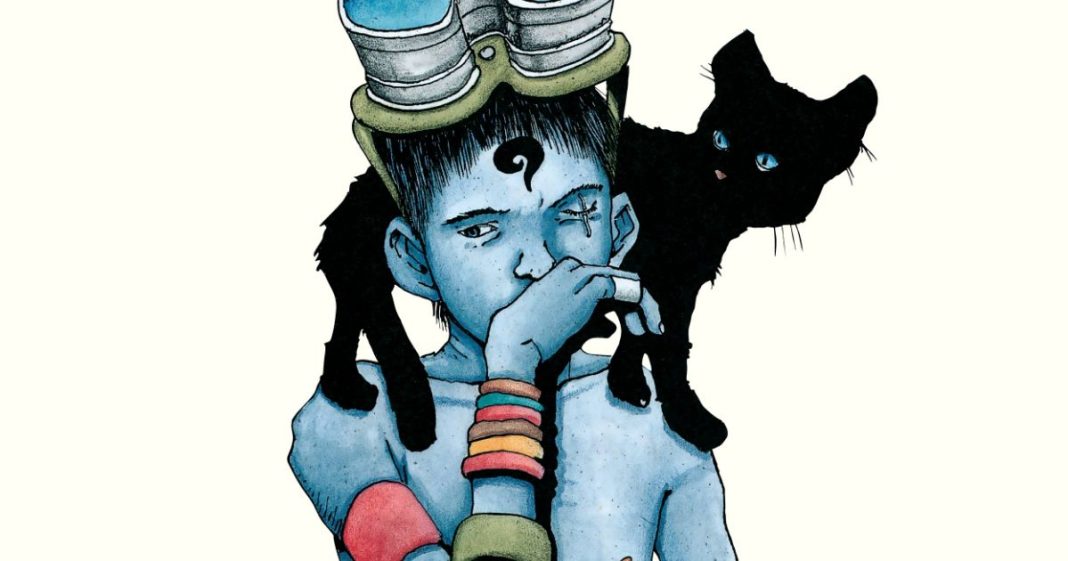
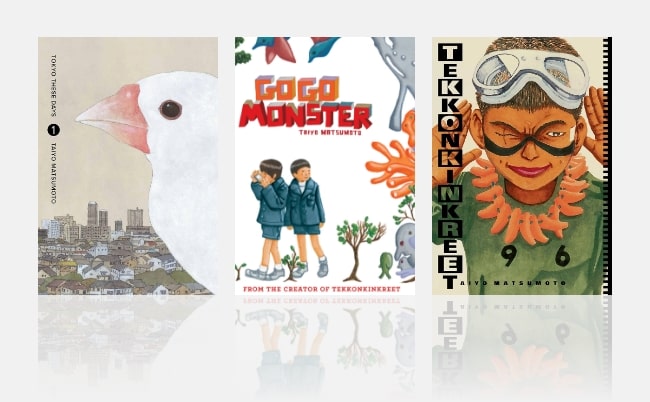








Thank you so much for writing this. Thorough in your descriptions! I have been a Matsumoto fan for years and always recommended him to other readers. His style is so unique. I’m sure this article will definitely get some readers interested in seeing his work.
Comments are closed.